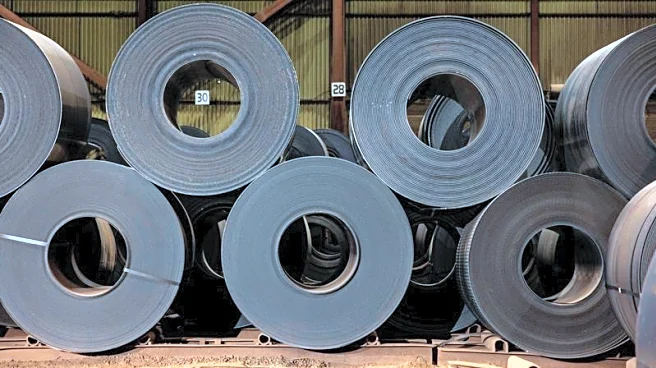What's Happening?
President Trump has announced new tariffs on imported lumber and furniture, including a 10% tariff on softwood lumber and a 25% tariff on kitchen cabinets and upholstered furniture. These tariffs are set to take effect on October 14, with further increases scheduled for January 1. The decision follows a Commerce Department investigation into the national security implications of lumber imports, primarily from Canada. Trump argues that these tariffs will strengthen domestic industries, create jobs, and bolster national security. However, industry experts warn that the tariffs could increase building costs and exacerbate the housing affordability crisis, as the U.S. relies heavily on Canadian lumber.
Why It's Important?
The tariffs imposed by President Trump could significantly impact the U.S. homebuilding industry, which relies on Canadian lumber for about 30% of its supply. Increased costs for lumber and furniture may lead to higher housing prices, affecting affordability for consumers. The move is part of Trump's broader strategy to protect domestic manufacturing and reduce reliance on foreign imports. However, the potential for increased costs and reduced availability of materials could pose challenges for builders and consumers alike, potentially slowing down construction projects and affecting the real estate market.
What's Next?
As the tariffs take effect, stakeholders in the homebuilding and furniture industries will likely assess their impact on costs and supply chains. Builders may seek alternative sources for materials or adjust project budgets to accommodate higher prices. The tariffs could also prompt discussions among policymakers and industry leaders about balancing protectionist measures with economic growth and consumer affordability. Additionally, Canadian exporters may respond by seeking new markets or negotiating trade agreements to mitigate the impact of U.S. tariffs.












